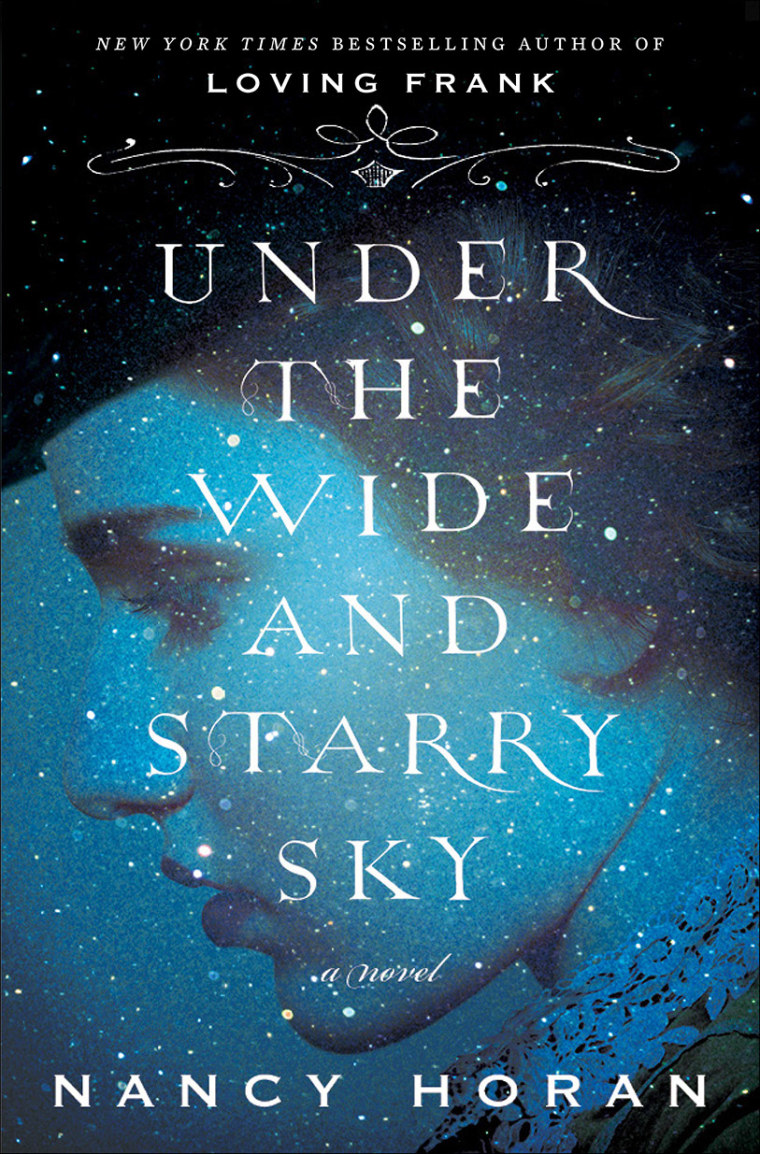The third TODAY Book Club pick is "Under the Wide and Starry Sky," the second novel by Nancy Horan, the celebrated author of "Loving Frank." Share your thoughts about Horan's windswept romance by joining the TODAY Book Club community. RSVP to the Google+ Hangout with Nancy Horan, happening Thursday, March 6, at 11 a.m. ET. And follow @TODAYsBooks, and stay up to date with the TODAY Book Club newsletter.
Robert Louis Stevenson credited most of his inspiration to "brownies," or the "Little People" — but his wife, Fanny Van de Grift Osbourne, deserves some of the credit, too. Nancy Horan's "Under the Wide and Starry Sky" helps rectify that by portraying their partnership, which extended beyond a traditional husband-and-wife relationship.
For one thing, Stevenson was chronically ill — if not deathly ill — throughout much of his life, and Fanny was responsible for keeping him alive. Without her efforts to keep him in climates that might be good for his lungs (which meant traveling around the world), he might not have survived long enough to pen such classics as "Treasure Island," "Kidnapped," and "The Strange Case of Dr. Jekyll and Mr. Hyde."
But as the book makes clear, Fanny wasn't just playing nursemaid. Here from "Under the Wide and Starry Sky" are just a few of the stories behind Stevenson's most well-known works.
Treasure Island
Before coming up with this quintessential pirate's tale, Stevenson primarily wrote essays and travel stories (several of which are archived online). But he really wanted to write adventure stories, and he started in part in an effort to amuse Fanny's son Sammy. After giving the boy a tour of some mine shafts, he started coming up with the character of Long John Silver — so named because of their surroundings. Stevenson thought of his friend and collaborator William Ernest Henley, who had a peg leg, and crafted Long John Silver in his image. "Henley... he'd always felt would make a fine pirate in a theatrical, given his wild red beard and barrel chest and a general huffing bravado," Horan writes.
Later on, when coloring with Sammy one rainy afternoon, Stevenson painted an island with some watercolors, and the Long John Silver story found itself with a new chapter. "Imagine there's an island where a chest of gold is buried, and a boy named Jim comes into possession of a map of the island," he started. As he progressed with the story, he realized he needed to replace the pirates' cursing, and enlisted the help of family members to come up with some "tepid oaths" suitable for a boy's magazine, resulting in phrases like "Shiver my timbers!" Worried about his literary reputation, he submitted it with a pseudonym: Captain George North.
The Strange Case of Dr. Jekyll and Mr. Hyde
During an invalid period, Stevenson had a nightmare about an agonized doctor who became a monster by taking a potion to avoid his pursuers. Though Stevenson was sick, he wrote nonstop for three days straight, with almost no breaks, only to emerge with a first draft of about 30,000 words. When he read his work to Fanny and Sammy (who by then called himself Lloyd), his wife took some notes. Fanny told him the story could be a masterpiece only if he turned it from a penny-dreadful horror story into an allegory about our own worst selves, by making the vice more abstract.
At first enraged by the criticism, Stevenson burned his draft. But after some reflection, he rewrote the story from a different point of view, recognizing how his own body could turn on him and how two contradictory states could exist in the same person. For another three days he wrote nonstop, until he had the story we know now. (Fanny's account is also told in the biography written by her sister, "The Life of Mrs. Robert Louis Stevenson").
Stevenson borrowed the name Jekyll from some friends who lived in Surrey. In Horan's novel, Fanny asks him at one point, "Louis, do you think we are still on friendly terms with Walter Jekyll and his sister, Gertrude?" He replies, "I suppose. Why do you ask?" "I've never had a sense of how they felt about us after you borrowed their family name for the story." He laughs, "At least it wasn't Dr. Hyde and Mr. Jekyll."
The Master of Ballantrae
Stevenson started writing about the Jacobite Rising of 1745 in Scotland during a stay at a colony for tuberculosis patients in upper New York, at Saranac Lake. "He couldn't seem to get away from that pivotal moment in history when the Scots rose up against the English and were defeated," Horan wrote. "Louis wanted the book to have sweep, to possess an emotional depth ... and to have a female character who would earn Fanny's approval."
Weir of Hermiston
Stevenson was in progress on this novel when he died suddenly of a cerebral hemorrhage. A portrait of a hanging judge, it is said to be based on Robert McQueen, a real-life 18th-century judge in Scotland. But it's the conflict between the judge ("a brutal father") and his romantic son Archie that seems to touch on a personal note for the author, who had struggles with his own father.
The writing of the novel was interrupted when Fanny fell sick and needed care from Louis, instead of the other way around. During her recovery, he sought her thoughts on his manuscript, including two characters who are both named Kirstie — the housekeeper at the family's country estate, and her younger niece, with whom Archie falls in love. "You are in [the elder Kristie] to be sure," the author tells his wife in Horan's novel. "But there is much Fanny Stevenson in the young Kirstie, too."
Though the unfinished romance was cut short by Stevenson's death, it was considered his masterpiece — and it was dedicated to his wife.
